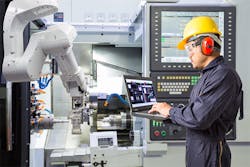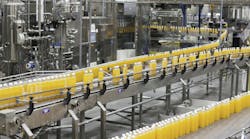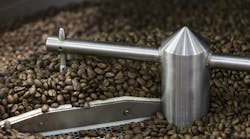Sony Japan has revealed it will no longer be repairing one of the most beloved of games consoles, the PlayStation 2. This is a classic example of a product being rendered obsolete due to more modern alternatives and the same issue occurs in processing plant legacy equipment. However, it’s often not as simple as upgrading to a PlayStation 4. Here, Jonathan Wilkins, marketing director at obsolete industrial parts supplier EU Automation, explains.
Sensors, robots and human machine interfaces (HMIs) are the obvious pieces of hardware related to digitalization in a processing plant, but what about the legacy equipment of the facility? Should old parts be kicked out and replaced with newer models? Not necessarily.
Legacy equipment is the backbone of U.S. manufacturing. Embarking on the "rip-and-replace" approach of overhauling entire systems is simply not cost-effective. Rather than splashing out on brand new hardware, the money saved by keeping existing equipment can be spent on improved maintenance and the integration of new technology such as retrofitted sensors and advanced automation.
Plan ahead
Obsolescence management has never been so important. In the ongoing fight to keep up with competition from Asia, manufacturers across the United States are looking for ways to increase efficiency and cost-effectiveness without breaking the bank. This has led to a reliance on legacy and obsolete systems.
It is impossible to stop parts from becoming obsolete, but it is possible to mitigate the risks to production when obsolescence does inevitably occur. At the time when legacy parts need replacing, important decisions need to be made — should a replacement for the part be sourced or should the entire system be written off?
This choice will have a huge impact on the business’ bottom line, therefore the decision should be planned in advance. Consider this as an example: A HMI panel in a facility has broken down. Unfortunately, it is a discontinued model, so an exact replacement cannot be sourced from the Original Equipment Manufacturer (OEM). However, the struggle faced now is to find a new model that can integrate with the other hardware.
Some manufacturers might deem it necessary to write off the entire system when a part breaks down, simply because they don’t believe they can find the same model or equivalent. Rather than embarking on a costly overhaul, manufacturers should have a replacement plan in place.
The replacement
Choosing to upgrade to a newer, but undoubtedly more expensive piece of equipment might seem like the easy option, but the ease of sourcing obsolete spares might be surprising.
A number of options are available to acquire an obsolete part. This includes using existing stock, last time buy (LTB) options, sourcing from an aftermarket supply, finding an alternate replacement from the same or a different manufacturer or finding the nearest equivalent substitute part.
But what if an exact replacement needs to be found? The chemicals industry is a good example of this. When a breakdown occurs, manufacturers in this sector will be in a situation where — for traceability and validation purposes — the new part will have to be identical in every way to the old one. Unfortunately, due to the long lifespan of most upstream applications, the old part is often obsolete.
The company may not have the time or financial resources to wait for the part to come from old stock elsewhere in the business. Equally, a site manager may not be able to stock all the parts needed in inventory, as it can be counterproductive to keep large stocks of rarely purchased items.
Priorities
Depending on the process, plant managers will have different system priorities. While those using batch manufacturing have the luxury of regularly stopping production to do maintenance work, those with continuous processes do not. This means chemical or food manufacturers using continuous production methods need to choose the most reliable system — as it will have to run until the next annual shutdown.
For some, this could mean a legacy system that their maintenance engineers know inside out is the best option. For others, it could mean that the latest generation of intelligent automation equipment is ideal. This decision comes down to each individual facility and company policy. Regardless of the process type, the ability to identify secondary sources and spare parts in advance is vital.
Another variation of priorities can depend on the size of the company involved. Large businesses may choose to hire an obsolescence manager, employ the services of a third-party specialist, purchase a computerized asset management system, or on a much smaller scale, simply use spreadsheets to keep records of product life cycles.
Whatever the method, obsolescence management comes down to assessing current systems and supply resources, conducting risk analysis on all parts and securing access to obsolete spares. An integral part of this process is to forge relationships with reliable automation spares suppliers. After all, knowing who to call when a part breaks could be the difference between a day of downtime or a week.
It is also crucial to know the lead times for the supply of such replacements. For example, if it takes one month to receive and install the replacement part, plant managers need to be thinking one month ahead.
Conclusion
There is a time and place for obsolete spares in processing. While the truth remains that in-depth planning and system understanding is essential for any plant manager undertaking obsolescence management, it is also true that help is at hand when sourcing replacements rapidly.
By working with an obsolete industrial parts supplier that knows the industry in depth and can source all the necessary parts, manufacturers can take a load off their mind while maintaining stride with the competition. While PlayStation 2s may be a thing of the past, legacy equipment doesn’t have to be.
Jonathan Wilkins is the marketing director of industrial automation components supplier EU Automation. A professional brand advocate and commercial marketing strategist, Wilkins focuses on delivering growth via a multichannel approach that has a significant positive impact on business. He has been part of the EU Automation team since its humble beginning nine years ago and has more than a decade of experience in marketing. Wilkins may be reached at [email protected].



